Podcast: Play in new window | Download
Subscribe: RSS
Entering this last week of February, college basketball fans are dreaming and scheming about how their favorite team might receive an invitation to the NCAA’s March Madness basketball tournament.
Men’s and women’s college basketball teams are clamoring for the favor of ESPN’s renowned March Madness prognosticator, Joe Lundardi.
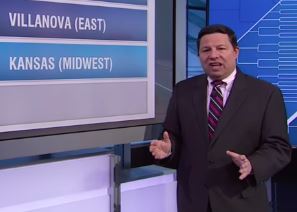
The term “Bracketology” is a combination of art and science in trying to determine the most likely teams to make the championship fields.
This past weekend, the cold and wet weather here in the swamp had me watching several exceptional college basketball games on television. On Saturday, I had my first chance to watch men’s #1 Auburn, #2 Florida, and #3 Alabama all play on television in different games.
This SEC top men’s trio is very good, but…???

If #1 Auburn had #3 Alabama’s talented point guard Malik Sears, Auburn would probably become the men’s champion this year. The Auburn Tigers (now 25-2) allowed pesky Georgia to hang with them far too long at home on Saturday afternoon in an 82-70 victory.
Likewise, if #3 Alabama had Auburn’s exceptional big man by the name of Johni Broome, the Crimson Tide might be a shoo-in for the title. Bama (22-5) finally pulled away to take down #17 Kentucky 96-83 in Tuscaloosa Saturday evening.
#2 Florida really struggled at LSU on Saturday night. Behind by six points at the half, the Gators finally awakened and put on a clinic during the game’s last ten minutes to down the Tigers 79-65. The game was much closer than the final score indicated.
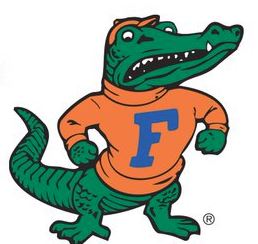
Like perennial power University of Houston, Florida has a very balanced team which plays solid defense. Saturday night’s shooting woes at LSU (a mediocre 14-13 team this season) showed future opponents a glimpse of the Gators’ kryptonite if their offense falters.
Shades of Pistol Pete! Congrats to the North Carolina State women’s team
The Wolfpack’s women’s basketball took down former #1 Notre Dame 104-95 in double overtime Sunday. NC State (now 22-5 and 14-2 in the ACC) likely guaranteed themselves a spot in the upcoming March Madness tournament field with the win.

The Fighting Irish (now 24-3 and 15-1 in the ACC) had their 19-game winning streak come to an end in this back-and-forth game Sunday afternoon in Raleigh, North Carolina.
In what have been the best individual play of this weekend, NC State guard Aziah James grabbed a defensive rebound in the second overtime and started dribbling down court with her left hand. As a Notre Dame defender tried to steal the ball, James used a nifty behind-the-back move to put the ball into her right hand and convert the lay-up.
The basket gave the Wolfpack a 6-point lead as NC State’s home crowd roared with approval.

The late Pistol Pete Maravich (whose Dad, Press Maravich, was an assistant coach at NC State prior to coming to LSU in the 1960’s) would have loved Aziah James’ perfectly timed basketball move!
Will the NCAA increase “March Madness” from 64 teams to 76 next year?
Several news outlets have reported that the annual NCAA March Madness basketball tournament field is considering increasing the field from 64 (+4 play-in teams) to 76 teams in 2026.
Just wondering. Which deserving teams are being left out of the field right now?

There are 31 conferences which compete for the NCAA Division 1 men’s and women’s basketball titles.
Expect half or more of the invited teams in this year’s March Madness field to come from just four major conferences (SEC, Big Ten, ACC, and Big 12)
As of today (Monday, February 24, 2025), ESPN’s famed “Bracketology” is projecting the following number of teams coming from those “Big Four” conferences:
Men’s Tournament Division (which has a total of 352 eligible teams this year)
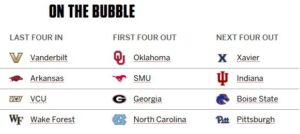
Men’s teams in the largest conferences appear to be in the driver’s seat:
SEC: 12 teams (out of 16 teams in their conference)
Big Ten: 10 teams (of 18)
Big 12: 8 teams (of 16)
ACC: 4 teams (of 18)
Total: 34 teams (out of 68 or 50% representation from those four conferences)
Remaining: 34 openings for the other 284 teams representing 27 other conferences
That means just seven “extra” teams from those 27 other conferences might make the field.
Women’s March Madness Tournament (with 350 eligible teams this season)
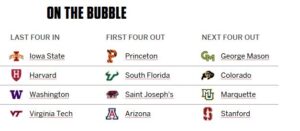
Much like the men, the teams from the four largest conferences will place more than the other conferences combined!
Big Ten: 13 teams (out of the 18 teams in that conference)
SEC: 10 teams (of 16)
ACC: 9 teams (of 18)
Big 12: 7 teams (of 16)
Total: 39 teams (out of 68 or 57.35% from those four conferences)
Remaining: 29 openings for the other 282 schools representing 27 other conferences
That means just two “extra” teams from the 27 other conferences might make the field.
If the NCAA March Madness tournament field expands to 76 teams next year, which teams will get those extra spots?
If you guessed “The big conferences!”, you’ll probably be right.

Isn’t there a better way to do this?
For example, McNeese State University currently leads the men’s Southland Conference standings with a sparkling 16-1 conference record and is 25-6 overall.

The Cowboys have a three game lead over the second place team (Lamar University) in the conference standings.
What if McNeese should lose to (let’s say) sixth-placed Northwestern State (now 12-15 overall) in the finals of the upcoming Southland Conference basketball tournament?
The league’s top regular season team (McNeese) will likely be sitting at home watching the March Madness tournament like the rest of us.
Meanwhile, a jubilant squad of Northwestern State Demons would represent the Southland Conference in the men’s March Madness field with a record hovering around the .500 mark for the year.
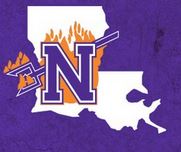
The “Cinderella Story” Demons will be matched against a #1 seeded team in the opening round of the men’s March Madness tournament. There’s always a chance to pull a big upset, but…???
Why even play a regular season slate of games if your conference tournament will dictate the lone team to receive a bid into the March Madness field?

If the majority of the 27 “smaller” college conferences receive just one guaranteed spot into the NCAA tournament, can the conference decide not to hold an end-of-season tournament conference championship game and just send the regular season winner?
Let’s start with a couple of positive assumptions:
Most of these smaller conferences like the fact that these end-of-season tournaments are (a) profitable and (b) are televised nationally (via ESPN’s family of networks or the CBS Sports Network) to provide fans and alumni a chance to watch the league’s title game.
By contrast, wouldn’t the Southland Conference have its best chance to actually win a game in the opening round March Madness tournament by sending its dominant regular season men’s champion (McNeese) to represent the conference?
If you’re one of the other 11 teams in the Southland Conference men’s basketball tournament, you would probably disagree with that argument.

I am not aware of any NCAA rule which requires that a conference must hold an end-of-season basketball tournament in order to determine its lone guaranteed spot in the March Madness field.
As of today, I am not aware of any conference which has been willing to do that.
Does America want to see a few more “pound puppies” from the smaller conferences in March Madness or additional mediocre teams from the “pedigreed” major conferences?

Take a look at the men’s SEC standings today.
If ESPN’s Bracketology projections are correct, two of the 12 SEC teams projected to make this year’s March Madness field have a losing record within their conference.
Vanderbilt (18-9 overall) is 6-8 in the SEC. Arkansas (16-11 overall) looks even worse at 5-9 in SEC play.
At the Big Ten (which projects to have ten teams making the March Madness field), Nebraska (17-10) sports a conference record today of just 7-9.
Personally, I would prefer to watch a 20+ game regular season league champion (which loses in its post-season conference tournament) participate in the March Madness tournament than see another marginal team from one of the four major conferences.

The opening weekend of the tournament might feature more of these upstart smaller conference teams (which posted an outstanding regular season record) get their chance to compete in the big dance field.
Regardless of how this plays out next year, the March Madness national champion (men or women) ultimately must win at least six straight games in the basketball tournament to take home the big trophy.
Whether next year’s new March Madness entrants come from the biggest or the smallest conferences, those additional teams will be given a microscopic chance of winning the title anyway.

